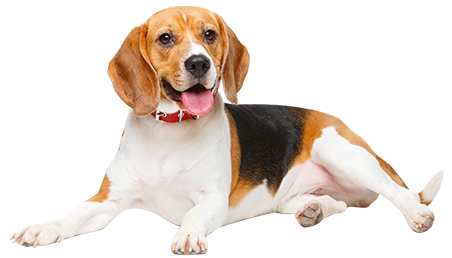The Essential Role of Raw Wet Dog Food in Active Dog Diets: Unlocking Optimal Nutrition
The Essential Role of Raw Wet Dog Food in Active Dog Diets
Understanding Active Dog Diets
Active dogs, whether they are working breeds, athletes, or simply high-energy pets, have unique nutritional needs. Their diets must fuel their energy levels, support recovery, and maintain overall health. As pet owners, we are tasked with ensuring that our furry friends receive the proper nutrition that will
2025/10/27
The Essential Role of Raw Wet Dog Food in Active Dog Diets
Understanding Active Dog Diets
Active dogs, whether they are working breeds, athletes, or simply high-energy pets, have unique nutritional needs. Their diets must fuel their energy levels, support recovery, and maintain overall health. As pet owners, we are tasked with ensuring that our furry friends receive the proper nutrition that will help them thrive.
Feeding an active dog involves considering various factors, including the dog’s age, size, breed, and level of activity. A balanced diet rich in proteins, fats, carbohydrates, vitamins, and minerals is essential. Among the options available, **raw wet dog food** has emerged as a promising choice that caters to the specific needs of active dogs.
What is Raw Wet Dog Food?
Raw wet dog food consists of uncooked meat, organs, bones, and sometimes vegetables, all blended to create a nutrient-rich meal. Unlike traditional dry kibble, which often contains preservatives and fillers, raw wet food aims to replicate a more natural diet, akin to what dogs would consume in the wild.
This type of food is generally high in moisture content, which can aid in hydration and digestion. The absence of grains and artificial additives makes it a more appealing option for many pet owners who prioritize their dogs’ health and well-being.
The Nutritional Benefits of Raw Wet Dog Food
1. High-Quality Protein for Energy
Active dogs require **high-quality protein** to support muscle growth and energy production. Raw wet dog food is typically rich in animal proteins, providing the essential amino acids necessary for maintaining lean muscle mass. This protein source fuels your dog during exercise and aids in recovery afterward.
2. Healthy Fats for Sustained Energy
In addition to protein, fats play a crucial role in an active dog’s diet. Raw wet dog food often contains healthy fats from sources like fish oil, which not only provide energy but also promote healthy skin and a shiny coat. Omega fatty acids found in fish oil are particularly beneficial for joint health, which is vital for active dogs that put stress on their joints through vigorous activities.
3. Hydration and Digestive Health
The moisture content in raw wet dog food helps keep dogs hydrated, especially those that engage in intense activities. Proper hydration is essential for maintaining energy levels and overall health. Moreover, raw wet food often contains natural enzymes and probiotics that support digestive health, aiding in nutrient absorption and reducing the risk of gastrointestinal issues.
Choosing the Right Raw Wet Dog Food
With numerous options available, selecting the right raw wet dog food can be overwhelming. Here are some crucial factors to consider:
1. Ingredients List
Always check the ingredients list. The first few ingredients should be high-quality animal proteins, followed by healthy fats. Avoid products with fillers, artificial additives, or excessive grains, as these can compromise the nutritional quality.
2. Sourcing and Quality
Choose brands that prioritize sourcing their ingredients from reputable farms and suppliers. High-quality raw food is typically made from human-grade ingredients, ensuring that the food is safe and nutritious for your dog.
3. Nutritional Analysis
Look for products that provide a detailed nutritional analysis. This should include the percentage of protein, fat, fiber, and moisture. Ensuring that the food meets the nutritional needs for your dog’s activity level is essential.
4. Formulation for Specific Needs
Some raw wet dog foods are specially formulated for specific life stages, breeds, or health conditions. If your dog has particular dietary restrictions or health issues, consult your veterinarian to select the most appropriate option.
Feeding Guidelines for Raw Wet Dog Food
Transitioning your active dog to a raw wet diet requires a thoughtful approach. Here’s how to effectively introduce this food into their routine:
1. Gradual Transition
Start by mixing raw wet food with your dog’s current food. Gradually increase the proportion of raw food over a week or more, monitoring your dog’s response. This gradual transition helps prevent digestive upset.
2. Portion Control
Active dogs generally require more food than their less active counterparts, but portion control is still crucial. Use feeding guidelines provided by the manufacturer as a baseline and adjust based on your dog’s activity level and body condition.
3. Monitor Health and Energy Levels
Keep a close eye on your dog’s health and energy levels after switching to raw wet food. Look for signs of improved energy, coat condition, and overall vitality. If you notice any adverse reactions, consult with your veterinarian promptly.
Potential Risks and Considerations
While raw wet dog food offers many benefits, it’s essential to be aware of potential risks:
1. Bacterial Contamination
Raw meats can harbor harmful bacteria such as Salmonella or E. coli. Proper handling and storage are crucial to minimizing this risk. Ensure that you keep the food frozen until ready to serve and maintain cleanliness in food preparation areas.
2. Nutritional Imbalance
Formulating a nutritionally balanced diet is more challenging with homemade raw diets. Commercial raw wet food is typically formulated to meet specific guidelines, reducing the risk of nutritional deficiencies. If you opt for homemade raw diets, consider working with a veterinary nutritionist.
3. Cost Implications
Raw wet dog food can be more expensive than traditional kibble. However, the benefits of improved health and reduced veterinary costs over time can offset these initial expenses.
Frequently Asked Questions (FAQs)
1. Can I mix raw wet dog food with dry kibble?
Yes, mixing raw wet dog food with dry kibble is possible, but be cautious as it can lead to digestive issues in some dogs. Introduce changes gradually.
2. How much raw wet food should I feed my active dog?
Feeding guidelines vary by product, but generally, active dogs require more calories. Refer to the packaging for recommendations based on your dog’s weight and activity level.
3. How can I ensure my dog’s diet is balanced?
Choose high-quality commercial raw wet dog food that meets AAFCO standards, or consult a veterinary nutritionist if you prepare homemade diets.
4. Is raw wet food safe for puppies?
Yes, raw wet food can be safe for puppies, but it’s crucial to select a formulation designed specifically for their growth needs.
5. How often should I feed my active dog raw wet food?
Most active dogs thrive on two meals a day, but this can vary. Consult your veterinarian for personalized recommendations based on your dog's specific needs.
Conclusion
Incorporating **raw wet dog food** into the diets of active dogs offers a myriad of benefits, from enhanced energy levels to improved overall health. By understanding the nutritional needs of your dog and choosing high-quality products, you can ensure that your furry companion receives the best possible nutrition. As we transition to more natural and holistic approaches to pet care, raw wet dog food stands out as a powerful option for supporting the vitality and well-being of our active dogs. Make informed choices and consult with professionals to provide the best for your beloved pet.
Key words:
Previous Page:
Contact Us
Address:
No. 22, Jingxing Road, Economic and Technological Development Zone, Nantong, Jiangsu Province.
E-mail:
panghuiqiang@metzpet.com
Contact Phone:
+86-18862996617














